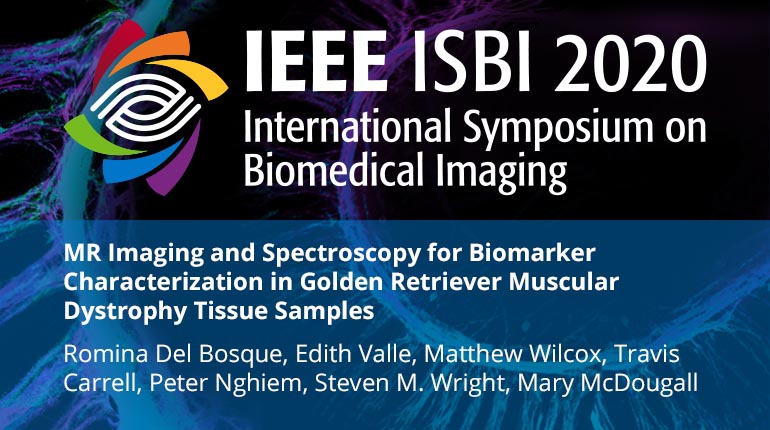Collection:

Custom double-tuned birdcage coils were constructed to enable concurrent evaluation of a number of NMR indices in the golden retriever muscular dystrophy (GRMD) model of Duchenne muscular dystrophy (DMD). Seven rectus femoris muscle samples from dogs with ages ranging from 3 to 30 months were studied. 1H T1-weighted (T1w) and T2-weighted (T2w) images, 23Na images, and 31P spectra were acquired for each sample. 1H T1w and T2w images showed a decrease in T2w/T1w signal ratio for the four older (=12 months) samples when compared to younger samples. Other NMR indices unexpectedly showed no significant correlation with age. The collection time of samples and varying levels of disease severity may have attributed to these results. Regardless, the associated custom coils and positioner developed to enable multi-nuclear studies will enable future work to investigate NMR-based biomarkers in the numerous GRMD samples available to our group.
- IEEE MemberUS $11.00
- Society MemberUS $0.00
- IEEE Student MemberUS $11.00
- Non-IEEE MemberUS $15.00
Videos in this product
MR Imaging and Spectroscopy for Biomarker Characterization in Golden Retriever Muscular Dystrophy Tissue Samples
Custom double-tuned birdcage coils were constructed to enable concurrent evaluation of a number of NMR indices in the golden retriever muscular dystrophy (GRMD) model of Duchenne muscular dystrophy (DMD). Seven rectus femoris muscle samples from dogs with ages ranging from 3 to 30 months were studied. 1H T1-weighted (T1w) and T2-weighted (T2w) images, 23Na images, and 31P spectra were acquired for each sample. 1H T1w and T2w images showed a decrease in T2w/T1w signal ratio for the four older (=12 months) samples when compared to younger samples. Other NMR indices unexpectedly showed no significant correlation with age. The collection time of samples and varying levels of disease severity may have attributed to these results. Regardless, the associated custom coils and positioner developed to enable multi-nuclear studies will enable future work to investigate NMR-based biomarkers in the numerous GRMD samples available to our group.
 Cart
Cart Create Account
Create Account Sign In
Sign In
